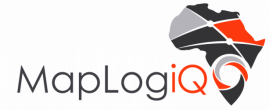MaplogiQ was born out of the necessity for transformation in an ever-changing spatial environment and to do things differently. We believe that the management, control, choices and the scope should reside with the client within an integrated real-time platform, where the clients can build their business, irrespective of the sector or the scale.
With 12 years’ experience in multiple sectors and successfully implementing projects of various sizes, ranging from small projects to water infrastructure audits, stand audits and numerous municipal, provincial and national projects; including the SpiSys initiative (Spatial Planning and Information System) where 13 sectors were integrated and data shared, we knew we could build a state of the art platform that could apply to all, irrespective of the skill level and spatial knowledge.
We took a very successful platform, looked at what worked, what didn’t work, what was indicated as essential based on our client base as well as what direction spatial platforms were moving into and created a robust platform that allows the clients to grow their business and data, so that informed decision making can prevail.

DATA INTEGRATION
Integrate, import and link data from numerous sources, formats and data types. Manage your data in a single location and utilize analytical tools to gain insights for business decision-making. Share your real-time data with other team members and collaborate to enhance data into information and knowledge for both operational and analytical uses.

DATA VISUALISATION
Translate information into visual context. View and analyze your data using interactive graphs and tables on project dashboards. Validate and manage data completeness, improve accuracy, monitor change, and visualize progress to identify trends and patterns, do statistics and manage deliverables within time frames and costs.

MOBILE APPLICATION
Setup smart linked questionnaires for surveys on mobile. Assign work as job cards to field workers via lists or spatially. Monitor progress spatially, per field worker or per project milestone. Verify incoming field data, approve or return for updates. Link and manage job card processes, print and send documents and communicate to clients via sms and email.

GEOVISUALISATION
View your landscape and environment through spatial layers and icons and contextualize with other data sets to obtain a better understanding and insight of your data. Conduct spatial analyses of geospatial data and expand your locational-intelligence through the use of interactive visualization. Create your own spatial views to inform management decision-making.
